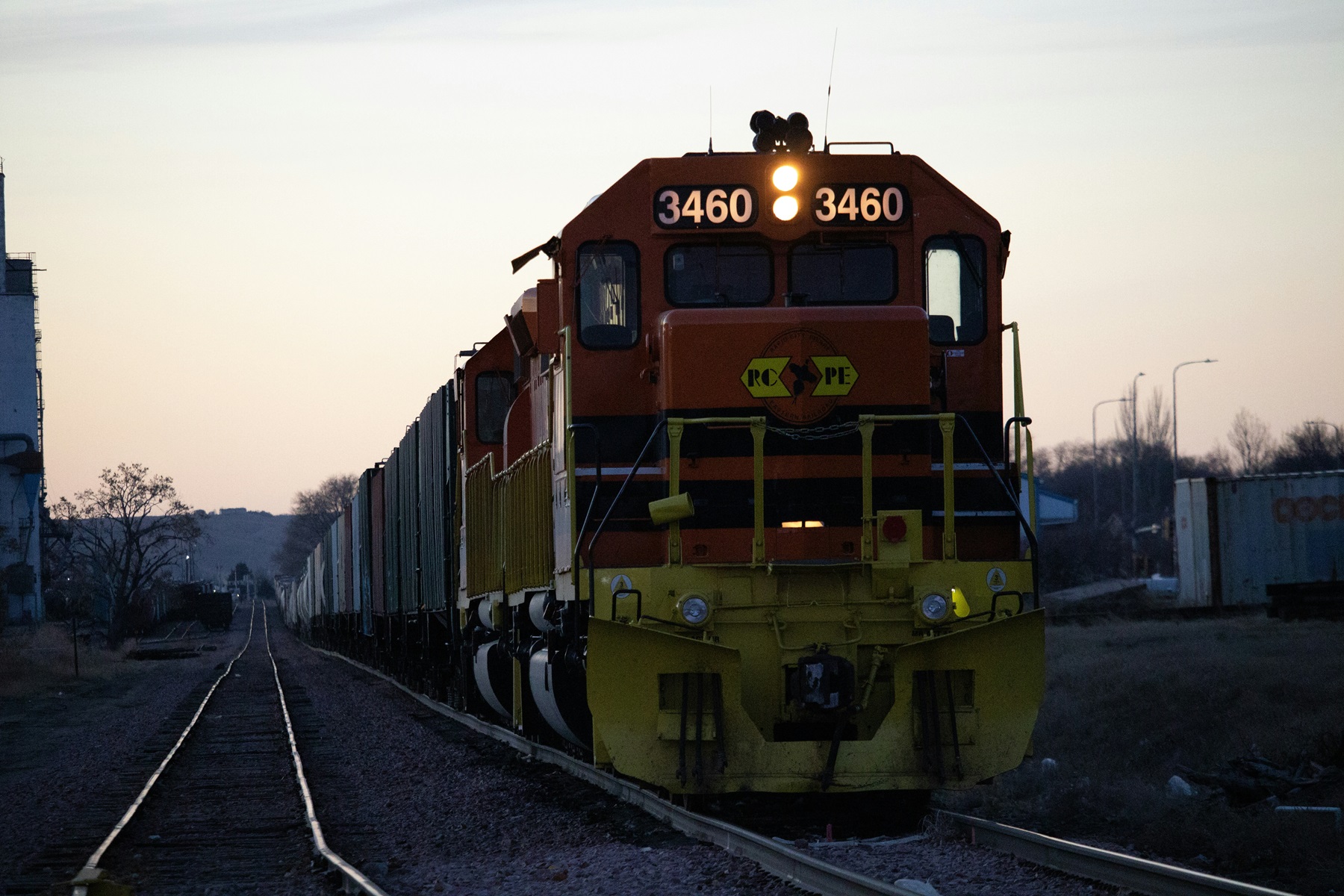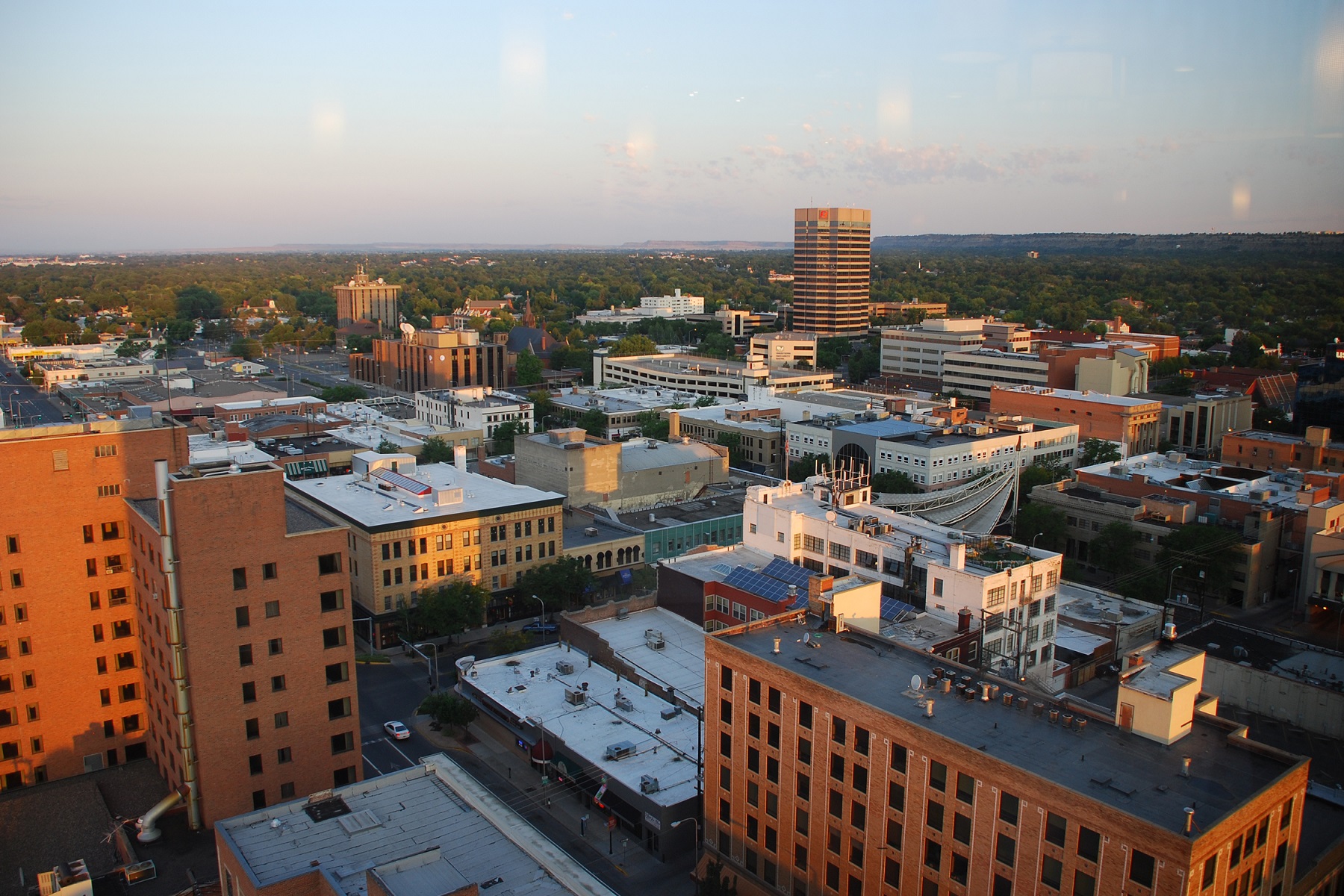Quick search
CTRL+K
Quick search
CTRL+K

Bismarck is the capital of the US state of North Dakota. The city’s history began in 1872, when it was founded by settlers on the banks of the Missouri River. The new town was called Missouri Crossing, which thus marked the place where the famous Lewis and Expedition had crossed the great river in the years 1804-1806. Later, the Missouri Crossing was called Edwinton after Edwin Ferry Johnson, who was chief engineer of the Northern Pacific Railway, which expanded the railroads in North Dakota.
In 1873 the railway company renamed Edwinton Bismarck after German Chancellor Otto von Bismarck in the hope of attracting German settlers and German investment in the railway company. In 1883, Bismarck became the capital of the Dakota Territory, which became a US state in 1889. Since then, Bismarck has grown to be the state’s second largest city after Fargo.
Today, Bismarck is a modern city, where in several places in the downtown you can see some sights that lead back to the city’s early history. Downtown is located on the streets north and northwest of the Bismarck Depot, which was built by the Northern Pacific Railway in 1900 in Spanish-inspired architecture. From here you can walk west on Main Avenue to the Camp Hancock State Historic Site. Camp Hancock was established as a garrison in 1872 to protect the construction of the railroad through the area, which took place 1872-1877.
Today, Camp Hancock is designated as a historic site, and you can see the Bread of Life Church from 1881, which was moved to here in 1965. In the downtown streets, you can also see buildings such as the World War Memorial Building and the former McKenzie Hotel, located opposite the railway station. The hotel opened in 1911 and was the city’s leading hotel throughout the 20th century with guests such as Theodore Roosevelt, Calvin Coolidge, John F. Kennedy and Lyndon Johnson.
On the periphery of downtown there are other interesting buildings. You can see, for example, the Cathedral of the Holy Spirit, which was built 1941-1945 in elegant art deco architecture as the city’s Catholic cathedral. There are many fine details in the decoration of the church, such as the stained-glass windows. If you walk east from the cathedral along Avenue B, you come to Trinity Lutheran Cathedral and St. George’s Episcopal Memorial Church, noted for its stained-glass windows, partly derived from English churches destroyed during WWII German bombing.
The former governor’s residence of North Dakota’s governor is close to the two churches. The fine house was built in 1884 by Asa Fisher as a private residence, and it was the governor’s residence from 1893 to 1960. The house is now open as a museum and furnished like in the early years as the governor’s residence.
In Bismarck you can also see the North Dakota State Capitol, which is the government building of the state of North Dakota. The Capitol was built in art deco in the years 1931-1934 as the state’s tallest building, and the 73-metre-high office tower was called the skyscraper of the prairie. In addition to the central tower, there are also other buildings in the complex around the Capitol, such as the neoclassical Liberty Memorial Building from 1924 and the residence of North Dakota’s governor.
Southeast of the Capitol, you can visit the North Dakota Heritage Center, which is the state of North Dakota’s museum of history. In the museum’s interesting exhibitions, North Dakota’s history and cultures are explained, and the collections include, among many other things, finds of dinosaurs and a skeleton of a mastodon.

Pierre is the picturesque capital city of South Dakota. It is located along the banks of the Missouri River, and it’s history dates back to 1880 when it was founded on the east bank of the river, opposite Fort Pierre. The fort and the city was named after Pierre Chouteau Jr., who was a prominent fur trader. The city grew and became a center for trade and transportation. South Dakota was admitted as a state in 1889, and Pierre was chosen as the state capital due to its central location. It has developed ever since, and Pierre is today home to both historical landmarks and modern buildings.
The most iconic landmark in Pierre is the impressive South Dakota State Capitol. It was completed in 1910, and the grand building features a blend of Classical Revival and Renaissance Revival architectural styles. The Capitol’s great dome and beautifully landscaped grounds are great sights, including the Flaming Fountain veterans’ memorial. Inside, you can admire murals and sculptures in the central rotunda.

Fargo in North Dakota is a city with an interesting history and great sights. Founded in 1871, Fargo began as a small settlement where the Northern Pacific Railroad crossed the Red River. It was named after William G. Fargo, a director of the Northern Pacific Railroad and co-founder of Wells Fargo Express Company.
Hereafter the city quickly grew from a rough frontier town into a bustling hub of commerce and industry. By the end of the 1800s, Fargo had established itself as a centre in the region, attracting settlers with the promise of fertile farmland in the Red River Valley.

Winnipeg is the capital and largest city of Manitoba, which along with Alberta and Saskatchewan are Canada’s prairie provinces. As the administrative center you can see the provincial government buildings in the city, which also has many other sights.
In architectural and cultural history, Winnipeg ranges from the city’s early years and constructions to modern buildings. The beginning of the 20th century is represented by Manitoba Club and Fort Garry Hotel, while the Canadian Museum of Human Rights stands as one of the city’s newer monuments of architecture.

Billings is the largest city in the US state of Montana. The city is set in the Yellowstone Valley, which was settled and developed in the late 19th century. In 1877, settlers established Coulson as the first town, and it was then a lawless place. When the railroad came to the area, the railroad owned land west of Coulson, and the company established Billings as a railroad town in 1882, naming it after Frederick H. Billings, president of the Northern Pacific Railways 1879-1881.
At first there were three buildings here, but in a few months 2,000 had settled in the new town. Some of the settlers came from Coulson, which as a town disappeared in the 1930s. By 1910, Billings had more than 10,000 residents, and growth continued throughout the century. The city became the center of energy production after the discovery of oil and gas in Montana and Wyoming, and later many high-rise buildings were built from the 1970s and 1980s.
 Bismarck, North Dakota[/caption]
Bismarck, North Dakota[/caption]
Overview of Bismarck
Bismarck is the capital of the US state of North Dakota. The city’s history began in 1872, when it was founded by settlers on the banks of the Missouri River. The new town was called Missouri Crossing, which thus marked the place where the famous Lewis and Expedition had crossed the great river in the years 1804-1806. Later, the Missouri Crossing was called Edwinton after Edwin Ferry Johnson, who was chief engineer of the Northern Pacific Railway, which expanded the railroads in North Dakota.
In 1873 the railway company renamed Edwinton Bismarck after German Chancellor Otto von Bismarck in the hope of attracting German settlers and German investment in the railway company. In 1883, Bismarck became the capital of the Dakota Territory, which became a US state in 1889. Since then, Bismarck has grown to be the state’s second largest city after Fargo.
Today, Bismarck is a modern city, where in several places in the downtown you can see some sights that lead back to the city’s early history. Downtown is located on the streets north and northwest of the Bismarck Depot, which was built by the Northern Pacific Railway in 1900 in Spanish-inspired architecture. From here you can walk west on Main Avenue to the Camp Hancock State Historic Site. Camp Hancock was established as a garrison in 1872 to protect the construction of the railroad through the area, which took place 1872-1877.
About the Bismarck travel guide
Contents: Tours in the city + tours in the surrounding area
Published: Released soon
Author: Stig Albeck
Publisher: Vamados.com
Language: English
About the travel guide
The Bismarck travel guide gives you an overview of the sights and activities of the American city. Read about top sights and other sights, and get a tour guide with tour suggestions and detailed descriptions of all the city’s most important churches, monuments, mansions, museums, etc.
Bismarck is waiting for you, and at vamados.com you can also find cheap flights and great deals on hotels for your trip. You just select your travel dates and then you get flight and accommodation suggestions in and around the city.
Read more about Bismarck and the United States
United States Travel Guide: https://vamados.com/usa
City tourism: https://visitbis-marck.com
Main Page: https://www.vamados.com/
Buy the travel guide
Click the “Add to Cart” button to purchase the travel guide. After that you will come to the payment, where you enter the purchase and payment information. Upon payment of the travel guide, you will immediately receive a receipt with a link to download your purchase. You can download the travel guide immediately or use the download link in the email later.
Use the travel guide
When you buy the travel guide to Bismarck you get the book online so you can have it on your phone, tablet or computer – and of course you can choose to print it. Use the maps and tour suggestions and you will have a good and content-rich journey.

Similar to Bismarck Travel Guide
